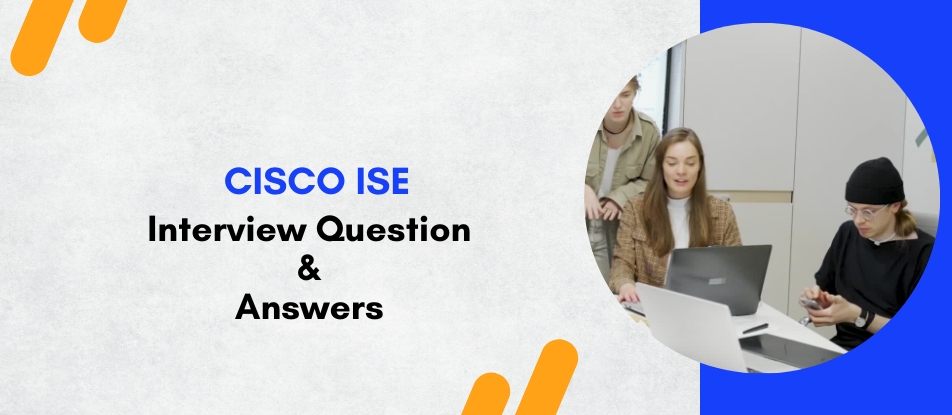
Cisco ISE training provides in-depth knowledge of identity and access control within enterprise networks. The course covers core concepts like 802.1X authentication, policy sets, guest access, BYOD onboarding, posture assessment, and integration with external identity providers. Through practical labs and real-world scenarios, learners gain the skills to deploy, configure, and manage Cisco ISE effectively, making it an essential training for IT administrators, network engineers, and cybersecurity professionals.
CISCO ISE Training Interview Questions Answers - For Intermediate
1. What is the role of the Policy Service Node (PSN) in Cisco ISE?
The Policy Service Node (PSN) is a core component of a distributed ISE deployment responsible for handling all policy-related requests. It performs authentication, authorization, and accounting tasks. When a user or device attempts to access the network, the PSN evaluates the request against policies and delivers a response, such as permit, deny, or assign a VLAN.
2. What is the difference between CoA (Change of Authorization) and re-authentication in Cisco ISE?
Change of Authorization (CoA) is a mechanism that allows ISE to dynamically change the access rights of an already authenticated session without disconnecting the user. Re-authentication, on the other hand, involves terminating the session and forcing the client to authenticate again. CoA is less disruptive and often used in posture or policy updates.
3. How does Cisco ISE ensure high availability in distributed deployments?
ISE supports high availability by allowing redundant nodes for each role—Administration, Monitoring, and Policy Service. If one node fails, another takes over without disrupting services. Load balancing is achieved using external tools like Cisco ACE or F5, and data replication ensures configuration and session continuity.
4. Explain the use of Time-Based Access Policies in ISE.
Time-Based Access Policies in ISE allow administrators to control when a user or group can access network resources. For example, guest users might only be permitted during business hours, while contractors could have weekend access. These policies are applied using policy conditions that reference time and date attributes.
5. What is the purpose of the pxGrid service in Cisco ISE?
Cisco pxGrid (Platform Exchange Grid) enables ISE to share contextual identity and policy information with other security platforms like Cisco Stealthwatch, Firepower, or third-party tools. This integration enhances threat detection and response by allowing bidirectional communication about users, devices, and sessions across the ecosystem.
6. How does ISE support device profiling using SNMP?
ISE uses SNMP probes to collect device-specific information from network access devices. This data includes device type, operating system, and services running. Based on SNMP responses and profiling policies, ISE categorizes the device and applies appropriate access policies.
7. What is MAC Authentication Bypass (MAB) in Cisco ISE?
MAC Authentication Bypass is used for devices that do not support 802.1X, such as printers or IP phones. When 802.1X fails, the NAD initiates MAB, sending the device’s MAC address as credentials. ISE matches the MAC address against policies and grants access based on predefined rules or profiling data.
8. What is the use of Authorization Profiles in ISE?
Authorization Profiles in Cisco ISE define the specific actions or permissions to be applied when a user or device is authorized. These may include VLAN assignments, ACLs, downloadable ACLs (dACLs), and redirection URLs. They are reusable policy objects that simplify policy management across multiple rules.
9. How does Cisco ISE enforce posture-based policies?
ISE uses the Cisco AnyConnect posture agent or NAC Agent to scan endpoint devices for compliance. Based on the results—such as presence of antivirus, updated OS, or firewall status—ISE applies different authorization rules. Non-compliant devices may be assigned restricted access or redirected to a remediation portal.
10. What are Conditions in Cisco ISE policy creation?
Conditions are the building blocks of policy rules in ISE. They define criteria based on attributes such as user identity, device type, group membership, authentication method, or time. Conditions are evaluated to determine whether a policy rule applies and what action to take.
11. How does Cisco ISE handle device registration and certificates in a BYOD setup?
In a BYOD scenario, users register their personal devices through a self-service portal. ISE provisions the device with a unique certificate and registers it in the internal database. This certificate is then used for future authentication, enabling secure and manageable access without repeated credential use.
12. What logging and alerting capabilities are included in Cisco ISE?
ISE provides robust logging via the Monitoring and Troubleshooting node. It records authentication logs, session events, system errors, and admin actions. Alerts can be configured for specific events, such as authentication failures or posture violations, and can be forwarded to SIEM systems using syslog.
13. What is Guest Portal customization in Cisco ISE?
Cisco ISE offers a flexible guest portal that can be fully customized with logos, colors, terms of use, and language settings. Administrators can tailor the user experience for branding or compliance requirements. Portal pages can also be customized for different guest types—sponsors, self-registered, or social media logins.
14. How does ISE handle duplicate MAC addresses or spoofing attempts?
ISE monitors and tracks endpoint behavior to detect anomalies like duplicate MAC addresses. When a MAC address appears on multiple ports or locations simultaneously, ISE can trigger alerts or deny access. Profiling and posture checks help validate the device identity to mitigate spoofing risks.
15. Can Cisco ISE integrate with third-party firewalls or endpoint solutions?
Yes, Cisco ISE supports integration with a wide range of third-party solutions via pxGrid or REST APIs. It can share context with firewalls, endpoint protection platforms, and threat intelligence systems. This enables coordinated responses, such as quarantining a compromised device or blocking network access automatically.
CISCO ISE Training Interview Questions Answers- For Advanced
1. How does Cisco ISE manage certificate-based authentication for users and machines using EAP-TLS?
Cisco ISE supports certificate-based authentication through the EAP-TLS protocol, which is considered one of the most secure methods for 802.1X authentication. In this setup, both the client and server exchange digital certificates to validate identity. ISE verifies the client certificate against a trusted Certificate Authority (CA), ensuring that the certificate is valid, signed, and not revoked. For machine authentication, certificates are typically deployed via Microsoft Active Directory Group Policy or MDM solutions. Cisco ISE also supports certificate template mapping and policies based on attributes found in the certificate (e.g., Common Name, OU, SAN). EAP-TLS eliminates the risk associated with passwords and is widely used in environments that demand high levels of identity assurance.
2. Explain the concept and usage of Application Visibility and Control (AVC) in Cisco ISE.
Application Visibility and Control (AVC) is achieved in Cisco ISE by integrating with infrastructure devices that can identify application traffic, such as Cisco WLCs or switches running NBAR2. ISE uses this application data to gain deeper insights into network usage and behavior. This enables administrators to apply access policies not just based on identity or device type, but also on the application being accessed. For instance, an employee might be allowed to use collaboration tools like Webex but restricted from accessing social media or streaming sites. AVC-based policies enhance security, optimize bandwidth usage, and support compliance efforts by aligning access with business requirements.
3. How does Cisco ISE support threat response using Rapid Threat Containment (RTC)?
Rapid Threat Containment (RTC) in Cisco ISE enables automated threat mitigation by integrating with Cisco security platforms such as Firepower, AMP for Endpoints, and Stealthwatch. When a threat is detected—such as malware, suspicious behavior, or data exfiltration—these platforms notify ISE via pxGrid. In response, ISE can initiate a Change of Authorization (CoA) to quarantine the device, restrict network access, or redirect the user to a remediation portal. RTC reduces the time to contain threats from hours to seconds, enabling dynamic policy enforcement based on live threat intelligence. This real-time reaction mechanism is essential in today’s dynamic threat landscape.
4. What is the role of REST APIs in Cisco ISE, and how can they be utilized?
Cisco ISE offers RESTful APIs to enable programmatic interaction with its configuration and operational data. These APIs allow external applications to automate tasks such as creating users, updating endpoint information, managing network devices, and retrieving session data. REST APIs are secured using HTTPS and require proper authentication (typically using an admin account or client certificates). Common use cases include integrating with ServiceNow for user onboarding, scripting endpoint registration, or triggering policy changes based on external system alerts. REST APIs help reduce manual overhead and enable DevOps-style automation in identity and access control environments.
5. Describe how Cisco ISE handles device onboarding for IoT and non-user-based devices.
IoT and headless devices often cannot participate in traditional authentication mechanisms like 802.1X or EAP. Cisco ISE handles these through a combination of MAC Authentication Bypass (MAB), profiling, and static identity mapping. When a device connects, ISE gathers attributes through DHCP, HTTP, SNMP, and other probes to identify the device type. Once classified, the device is placed into a defined identity group, and specific authorization policies are applied. In some environments, a static whitelist of MAC addresses is also used for high-security applications. Cisco’s IoT onboarding framework in ISE ensures even unmanaged or legacy devices are securely integrated into the network.
6. What is the significance of scalable group tagging (SGT) in ISE-enabled TrustSec deployments?
Scalable Group Tags (SGTs) are numeric identifiers assigned to users or devices after authentication, which can then be used for policy enforcement without relying on IP addresses or subnets. In TrustSec deployments, ISE assigns SGTs dynamically based on identity, group membership, device type, or posture. These SGTs travel with the traffic across the network and are interpreted by infrastructure devices (switches, firewalls) to enforce access control through Security Group Access Control Lists (SGACLs). This tag-based segmentation allows scalable, simplified policy management, especially in large or dynamic environments where IP-based rules would be cumbersome.
7. How is device compliance checked and enforced when users connect via VPN?
When users connect through VPN, compliance checks are performed by Cisco AnyConnect’s posture module, which interacts with ISE. After authentication, the client evaluates posture policies configured on ISE, such as antivirus presence, OS version, or encryption status. The posture result is sent to ISE, which categorizes the endpoint as compliant or non-compliant. ISE then applies authorization rules accordingly—granting full access to compliant devices and limited access or quarantine VLANs to non-compliant ones. This ensures that remote devices meet corporate security standards before accessing internal resources.
8. What are ISE Personas, and how do they support distributed deployment?
Cisco ISE utilizes a persona-based architecture to support scalability and redundancy. The three primary personas are Administration, Policy Service, and Monitoring. The Administration Node (PAN) manages configuration and policy settings; the Policy Service Node (PSN) processes authentication, authorization, and accounting requests; the Monitoring Node (MnT) handles logs, alerts, and reporting. These personas can be deployed on separate nodes in a distributed architecture, allowing for load balancing and high availability. For example, large enterprises may deploy multiple PSNs geographically to handle authentication closer to users while centralizing monitoring and policy administration.
9. How does Cisco ISE support Wireless LAN Controller (WLC) integration for dynamic access control?
Cisco ISE integrates with Cisco WLCs using RADIUS to dynamically control wireless client access. During the authentication process, ISE evaluates user credentials, device posture, and other attributes to determine the appropriate access level. It then communicates this decision back to the WLC, which applies VLAN assignments, ACLs, or downloadable ACLs (dACLs). ISE also enables guest access and BYOD workflows through redirect URLs to captive portals hosted by ISE. Integration with WLCs allows centralized policy enforcement and consistent security across wired and wireless segments.
10. How does Cisco ISE utilize certificate revocation lists (CRLs) and OCSP for certificate validation?
To ensure the validity of client certificates during authentication (EAP-TLS), Cisco ISE checks whether the presented certificate has been revoked. This can be done using a Certificate Revocation List (CRL), which is a list of revoked certificates downloaded from a CA, or via the Online Certificate Status Protocol (OCSP), which allows real-time status checks. ISE supports both methods, and administrators can configure fallback options and caching mechanisms. Proper certificate validation is critical in environments where revoked credentials must be promptly denied access to maintain security integrity.
11. What are authorization result conditions, and how do they work with authorization profiles in ISE?
Authorization result conditions are logical expressions that evaluate user, device, and session attributes to determine which authorization profile should be applied. For instance, a condition may evaluate if a user is part of the HR group, the device is a laptop, and the posture status is compliant. If all conditions are met, ISE applies an authorization profile that permits full access. These profiles may include VLAN assignment, ACLs, QoS policies, or SGT tagging. Conditions allow for granular control and dynamic policy enforcement, supporting diverse use cases within a single policy framework.
12. Explain how ISE supports device certificate deployment in BYOD scenarios.
In BYOD environments, Cisco ISE enables self-service certificate provisioning as part of the onboarding process. A user connects to the network and is redirected to the ISE BYOD portal. After authentication and device registration, ISE initiates a workflow to install a device certificate signed by an internal or external CA. This certificate enables subsequent EAP-TLS authentication, improving security and streamlining access. Device certificates are bound to the user and device MAC address, allowing for consistent identification and easier policy application for personal devices across sessions.
13. What is device sensor technology in Cisco switches, and how does it enhance profiling in ISE?
Cisco switches equipped with device sensor technology can automatically gather endpoint attributes (like DHCP options, CDP/LLDP, HTTP headers) and forward them to ISE. This enhances device profiling accuracy, especially when ISE lacks direct visibility into endpoint behavior. The switch acts as a probe, enriching ISE’s profiling database with real-time contextual data. Device sensor configurations must be enabled on the switch, and ISE must be set to receive this data. This integration reduces the need for span ports or port mirroring while improving endpoint classification.
14. How can ISE be integrated with Cisco Secure Network Analytics (Stealthwatch) for behavioral analytics?
Cisco ISE and Stealthwatch can be integrated via pxGrid to combine identity and behavior analytics. ISE provides Stealthwatch with user and device context (such as username, IP, MAC, and group), while Stealthwatch monitors traffic patterns and detects anomalies like data exfiltration or malware communication. If Stealthwatch detects suspicious behavior, it can notify ISE, which may respond by restricting access, moving the device to a quarantine VLAN, or requiring remediation. This real-time feedback loop improves network visibility and incident response through dynamic, identity-aware policy enforcement.
15. Describe a Zero Trust use case implemented with Cisco ISE, including integration with other platforms.
In a Zero Trust implementation, Cisco ISE serves as the central policy decision point for granting access based on user identity, device posture, and contextual data. For example, when a user attempts to access a sensitive application, ISE authenticates them via EAP-TLS, checks their compliance status via AnyConnect, and evaluates group membership through Active Directory. ISE tags the session with an SGT, which is enforced across the network using TrustSec. Simultaneously, ISE shares session data with Cisco SecureX or Secure Network Analytics via pxGrid for continuous threat monitoring. If an anomaly is detected, ISE dynamically reclassifies the session using CoA, restricting or terminating access. This comprehensive approach aligns perfectly with Zero Trust principles by continuously verifying trust and enforcing least-privilege access.
Course Schedule
| Nov, 2025 | Weekdays | Mon-Fri | Enquire Now |
| Weekend | Sat-Sun | Enquire Now | |
| Dec, 2025 | Weekdays | Mon-Fri | Enquire Now |
| Weekend | Sat-Sun | Enquire Now |
Related Courses
Related Articles
Related Interview
- Microsoft Certified Cybersecurity Architect Expert SC-100 Training Interview Questions Answers
- MLOps Fundamentals Training Interview Questions Answers
- Certified Kubernetes Administrator (CKA) Interview Questions Answers
- Smart Plant Electrical Admin (SPEL) Interview Questions Answers
- SAP Integrated Business Planning (IBP) - Interview Question Answers
Related FAQ's
- Instructor-led Live Online Interactive Training
- Project Based Customized Learning
- Fast Track Training Program
- Self-paced learning
- In one-on-one training, you have the flexibility to choose the days, timings, and duration according to your preferences.
- We create a personalized training calendar based on your chosen schedule.
- Complete Live Online Interactive Training of the Course
- After Training Recorded Videos
- Session-wise Learning Material and notes for lifetime
- Practical & Assignments exercises
- Global Course Completion Certificate
- 24x7 after Training Support

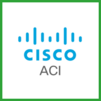





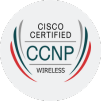
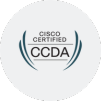


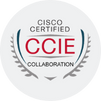


 Join our Live Instructor-Led online classes delivered by industry experts
Join our Live Instructor-Led online classes delivered by industry experts